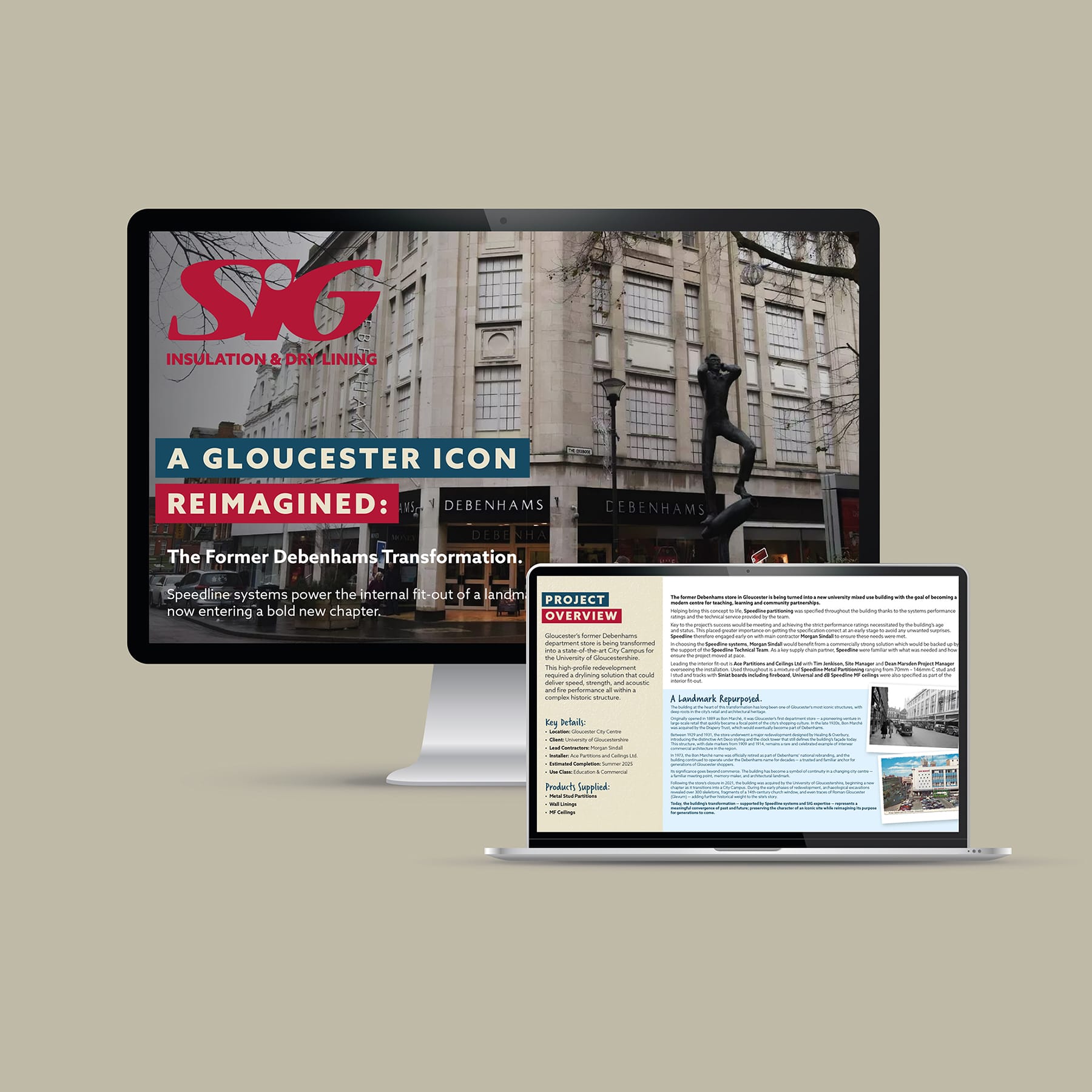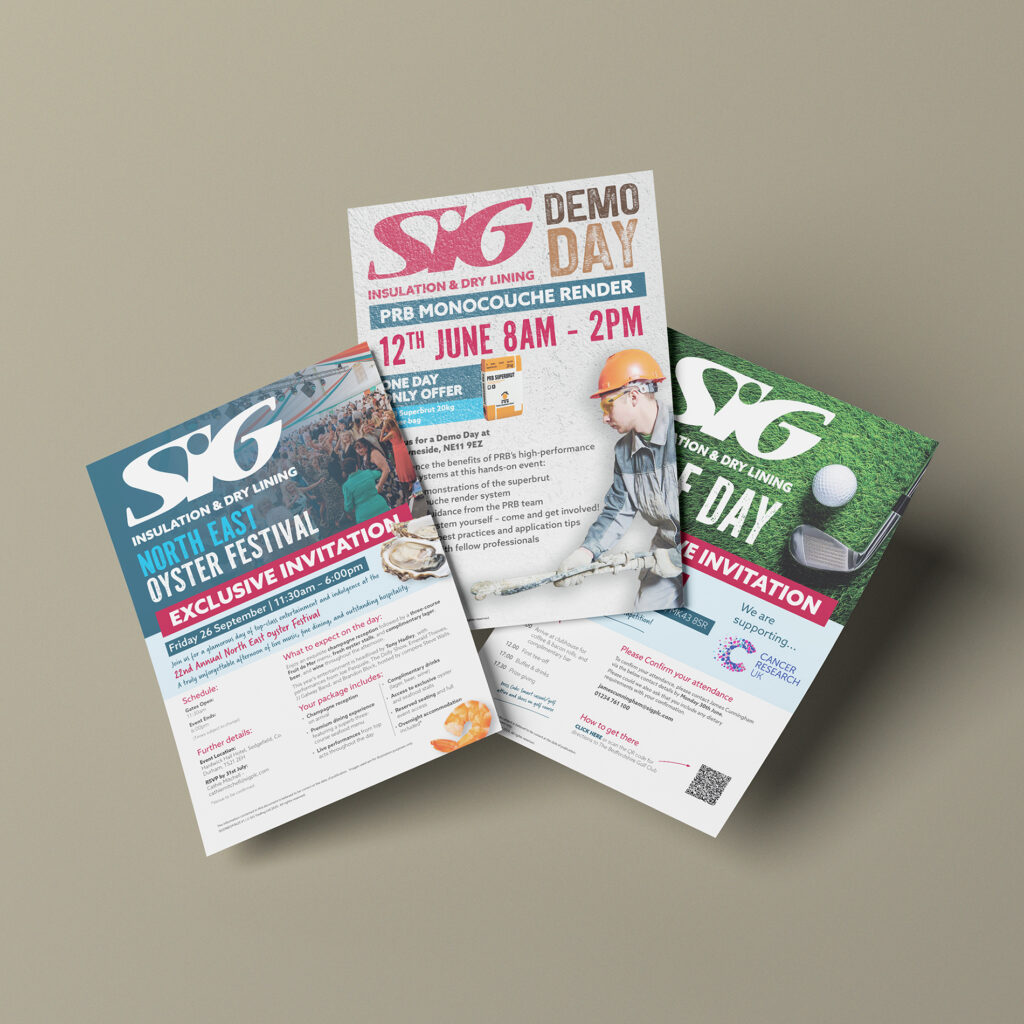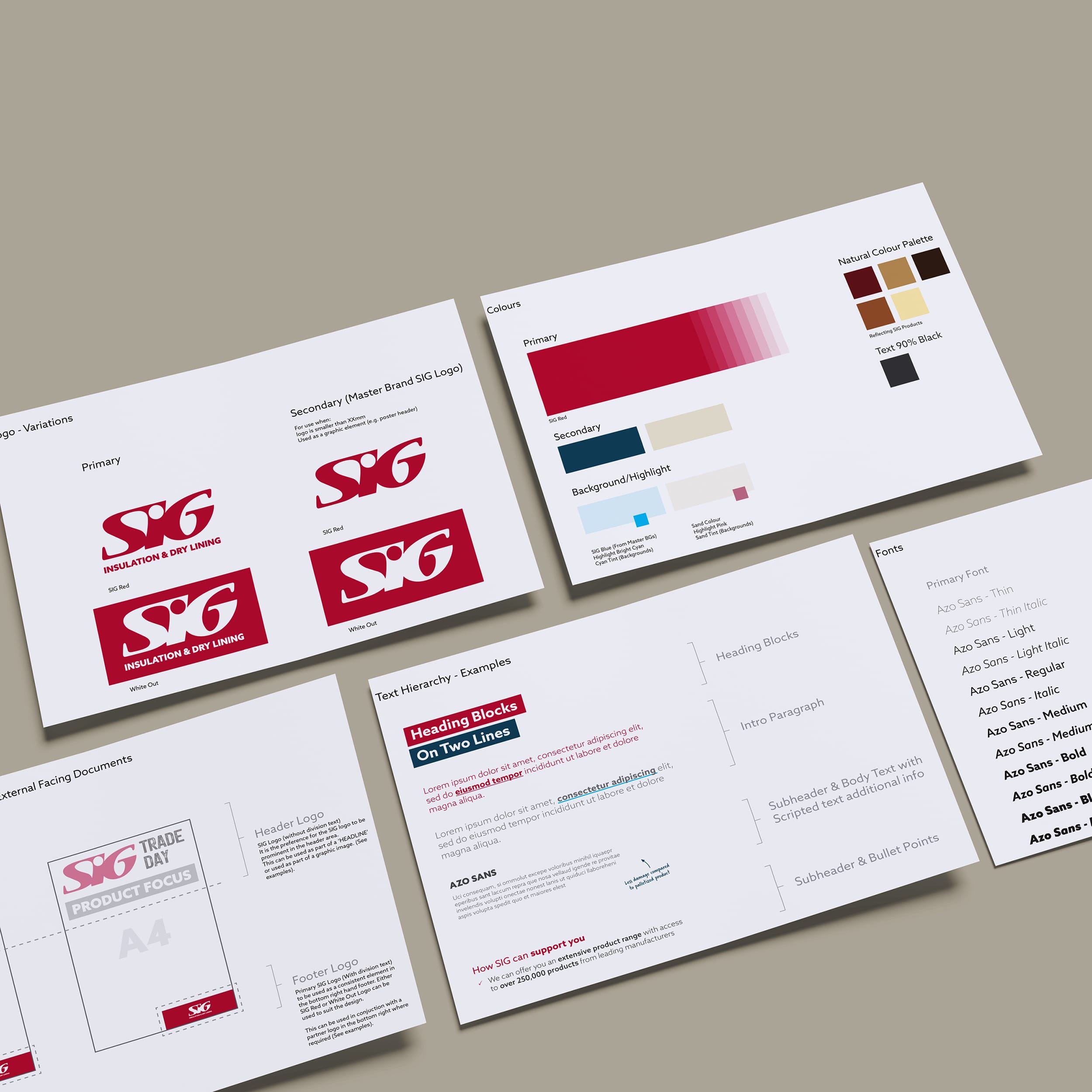It’s every single interaction someone has with your business. From the moment they land on your website to flicking through your latest catalogue, each touchpoint either builds trust or chips it away.
The businesses that stand out aren’t necessarily the largest or the cheapest. They’re the ones that know exactly who they are and aren’t afraid to show it.
And, when this happens, their brand becomes their competitive advantage.
But first, what is a brand?
A brand is the sum total of how people feel about your business.
It isn’t just your logo, colour scheme, or tagline (but those bits matter too!). It’s the experience someone has when they visit your website, the impression they get from your direct mail, or how they feel after working with your team.
Think of it as your business’ personality on show.
Regardless of how someone encounters your brand – whether it’s through a direct mail campaign, social media, or face-to-face meeting – they should get the same sense of who you are and what you stand for.
Your brand thrives in the details: the tone of your email responses, the quality of your catalogue design, and the way you handle problems. It’s built with consistency over time, not created overnight with a new logo!


Why branding matters more than you think
Your prospects are surrounded by choice.
When they’re trying to decide between you and three other companies, your expertise might be identical, your prices competitive, and your services similar. What will make them turn in your favour will be how you make them feel.
Strong branding can cut through the noise of your industry. It makes you memorable when someone needs exactly what you offer – regardless of whether it has been six months since they received a piece of direct mail from you or landed on your website by accident at 2am.
A strong brand ensures that yours is the name they remember.
It almost goes without saying that branding is no longer “nice to have”. A good brand is a strategic tool that drives your desired results – whether that be shorter response times, reduced sales cycle, or increased customer lifetime value.
What’s actually working in 2025?
The brands and businesses getting results now have figured out a few key things:
- Authenticity beats perfection: People would rather work with the company that shows their real team and admits when projects get challenging, than the one with stock photos and generic promises.
- Stories sell better than specifications: Instead of listing features and unique selling points, show how you’ve solved similar problems for other clients. They understand that people buy from people (and businesses) they can relate to.
- Consistency compounds: You want the experience someone has when they interact with your brand – by seeing it on LinkedIn or visiting your website – to be unmistakably yours. It’s less about having identical layouts and templates – more so maintaining the same personality and quality across everything.
- Accessibility isn’t optional: Good brands work for everyone. This means readable fonts, proper colour contrast, and a clear navigation (and that goes for websites and catalogue layouts!).
- Simplicity wins: Take away the clutter, and focus on what really matters. Clean designs, clear messaging, and confidently using white space will have a bigger impact than having a busy, overcomplicated approach.
What are the foundations of a brand?
There’s plenty of groundwork you need to do before you can start designing a website or putting your products in a catalogue. You need to be clear on the fundamentals:
Your brand purpose
- Why does your business exist beyond making money?
- What problems do you solve that others don’t?
This isn’t about writing a mission statement with no intention to follow it. It’s understanding what drives your team and why clients should care about it.
Your brand personality
Are you the approachable experts who make complex catalogue production feel simple? The reliable team that delivers exactly what they promise? Your personality should come through everything – from reading your about page to chatting with your team on the phone.
Your brand positioning
How do you want to be perceived in relation to your competitors? What space do you want to own in your ideal customers’ minds? This shapes everything from your pricing strategy through to your marketing messages.
Your brand values
We’d argue that your values are the most important part of building a brand. What principles guide your decisions? These aren’t just words for you to put on a wall – they should be visible in how you work, what you prioritise, and the standards you maintain.
Your brand promise
What can clients expect when they work with you? Your brand promise should be specific, deliverable, and different from what everyone else is offering.
If you get these foundations right, everything else – from logo design to website copy – becomes much clearer and more effective.
How to build a brand in 5 steps
While building a brand isn’t quite this straightforward, these five steps make up the essential foundations that every business needs to get right:
- Define your brand strategy: The fundamentals we highlighted above. Have absolute clarity on your purpose, personality, positioning, principles, and promise. Together, these form the blueprint for everything that follows.
- Develop your visual identity: This is where the logos, fonts, and colours come in. Remember, these elements need to work together, whether they’re on your website or your business cards.
- Create your brand voice: Develop a consistent tone and messaging approach that works across all your communication channels. The voice that works in your email newsletters should compliment your web copy and printed materials.
- Apply it consistently: Roll out your brand across every channel – website, marketing collateral, social media, email signatures and the office, too. Consistency is what builds recognition over time.
- Live your brand: It sounds cheesy, but it works! Your team should embody your brand values and personality in every client interaction. The best visual identity won’t help if you don’t have the buy-in from your team to provide that experience.
Of course, implementing these steps across everything requires both strategic thinking and practical expertise – which is where working with an experienced partner can make all the difference.
Do you need brand guidelines?
In a word? Absolutely.
Your brand style guide is your insurance policy against inconsistency. It documents how your brand should look, sound, and feel across different applications. It ensures everyone on your team (and any external partners) can accurately maintain your brand standards.
Good brand guidelines will make decisions easier, not harder. If you’re updating your website or designing new direct mail pieces, you will have a clear direction without stifling creativity.
Your brand guidelines should include:

- Visuals: Logo usage, colour codes (both RGB for digital and CMYK for print), typography specifications, font usage, and image styles.
- Tone of voice: Examples of how your brand should sound in different contexts – from website copy to social media posts.
- Application examples: Show how your brand works across its ecosystem – business cards, letterheads, website headers, catalogue covers, and social media graphics.
FAQs about building a strong brand in 2025
- How long does building a brand identity usually take? Think of it as a marathon, not a sprint. The initial development may take a few months, but rolling it out consistently and seeing recognition may take up to a year.
- Do I need a rebrand or a refresh? If your current brand has recognition but feels outdated, we’d recommend a refresh over a rebrand. Think about how much equity you’ve built in your existing identity before starting over.
- How do I keep my brand consistent across print and digital? Test everything in both formats during the initial brand development process. Your colours may look different on screens and paper, and your fonts need to work at various sizes. Create templates for common applications to maintain consistency.
- What’s the difference between brand identity and brand strategy? Strategy is what your brand stands for and how it positions itself. Identity is how that strategy looks, sounds, and feels to your audience. Spoiler: You need the strategy first.
- How often should I update my brand? There is no arbitrary timeline for updating your brand. How often you update it depends on your industry, and whether you feel relevant and recognisable.
- Can I build a strong brand on a tight budget? Yes! You will need to be ruthless in your priorities, though. Get your core visual identity and messaging right first, then concentrate on the other elements as your budget allows.
- Should my brand look the same everywhere? Your core identity should be consistent, but applications can vary. Your LinkedIn posts can be more casual than your proposals – but your personality should always remain.
Final thoughts
Your brand is either working for you or against you – there is no neutral.
And, having a strong brand in 2025 isn’t about following the latest design trends or copying your competitors. You should be clearly communicating who you are, what you stand for, and why your clients choose you.
The businesses getting this right understand that brand is an investment, not an expense. Consistency builds recognition, authenticity creates trust and connections, and – ultimately – having good branding makes everything else (from marketing to sales to client retention) work better.
Would you like to build a strong brand?
Having a strong brand requires strategic thinking and consistent execution. Regardless of if you’re starting from scratch, or looking to refine what you already have, you need to get the foundations right.
Before making any changes, make sure you:
- Understand your audience
- Are clear on your positioning
- Know how to express your personality across every channel
Making the investment in your brand will pay dividends in stronger client relationships, more effective marketing, and sustainable business growth. That is what will make you stand out from the noise in a crowded marketplace.


